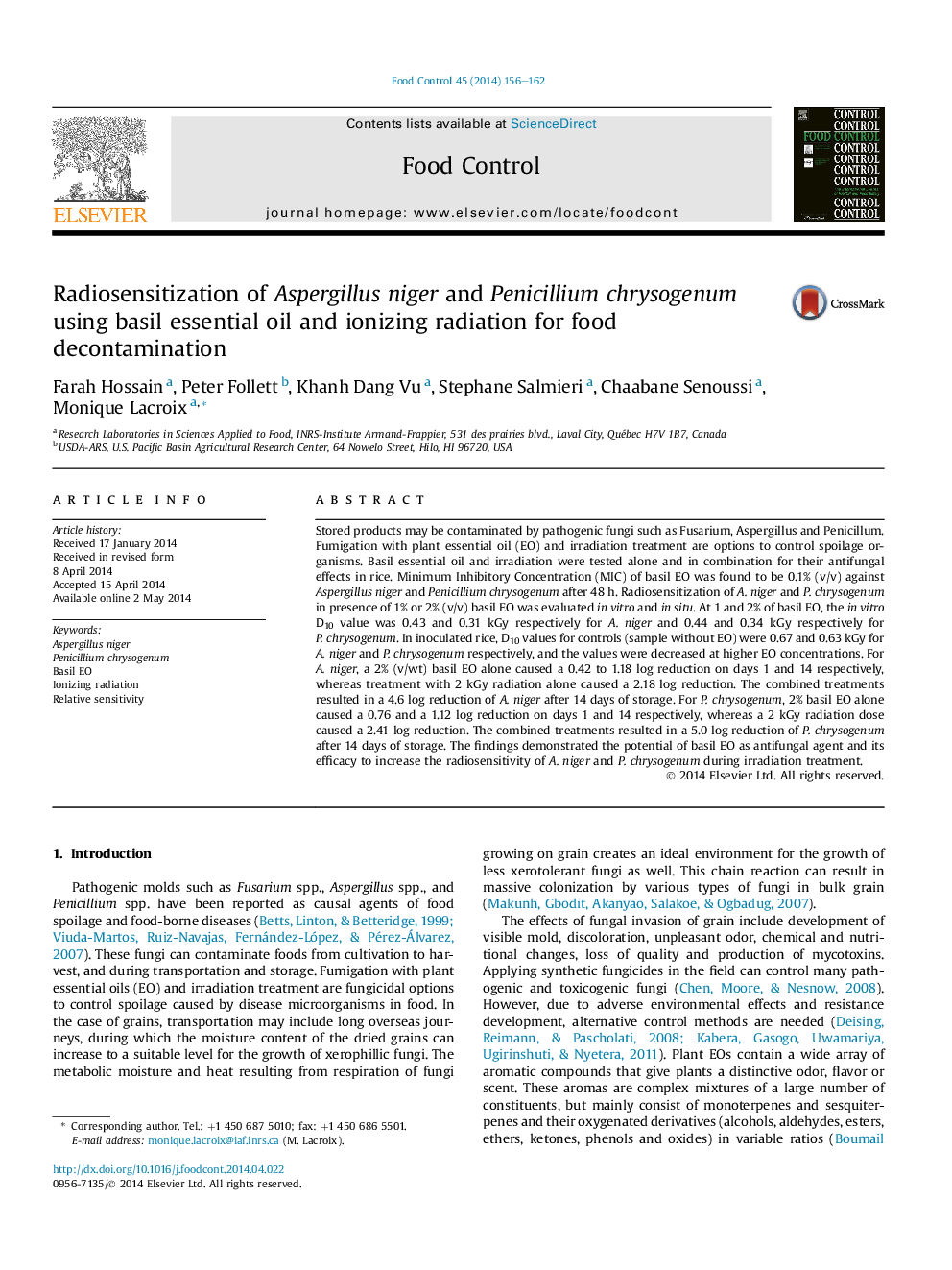| Article ID | Journal | Published Year | Pages | File Type |
|---|---|---|---|---|
| 6391630 | Food Control | 2014 | 7 Pages |
â¢Basil EO have antifungal efficiency against A. niger and P. chrysogenum.â¢Basil EO can increase the relative radiosensitivity of these species.â¢The inhibitory effect enhances by combining EO and ionizing radiation treatment.â¢The combined treatment can control these species during storage condition.
Stored products may be contaminated by pathogenic fungi such as Fusarium, Aspergillus and Penicillum. Fumigation with plant essential oil (EO) and irradiation treatment are options to control spoilage organisms. Basil essential oil and irradiation were tested alone and in combination for their antifungal effects in rice. Minimum Inhibitory Concentration (MIC) of basil EO was found to be 0.1% (v/v) against Aspergillus niger and Penicillium chrysogenum after 48 h. Radiosensitization of A. niger and P. chrysogenum in presence of 1% or 2% (v/v) basil EO was evaluated in vitro and in situ. At 1 and 2% of basil EO, the in vitro D10 value was 0.43 and 0.31 kGy respectively for A. niger and 0.44 and 0.34 kGy respectively for P. chrysogenum. In inoculated rice, D10 values for controls (sample without EO) were 0.67 and 0.63 kGy for A. niger and P. chrysogenum respectively, and the values were decreased at higher EO concentrations. For A. niger, a 2% (v/wt) basil EO alone caused a 0.42 to 1.18 log reduction on days 1 and 14 respectively, whereas treatment with 2 kGy radiation alone caused a 2.18 log reduction. The combined treatments resulted in a 4.6 log reduction of A. niger after 14 days of storage. For P. chrysogenum, 2% basil EO alone caused a 0.76 and a 1.12 log reduction on days 1 and 14 respectively, whereas a 2 kGy radiation dose caused a 2.41 log reduction. The combined treatments resulted in a 5.0 log reduction of P. chrysogenum after 14 days of storage. The findings demonstrated the potential of basil EO as antifungal agent and its efficacy to increase the radiosensitivity of A. niger and P. chrysogenum during irradiation treatment.
